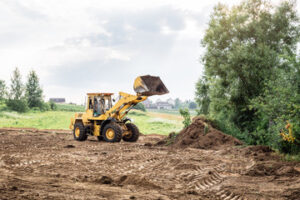Link building is one of the most important aspects of SEO. It is a long-term strategy that requires dedication and quality content. It is a process that should be performed regularly to see results.

There are many different ways to build links. Some are more effective than others, but they all have their benefits. Some of the most popular methods include broken link building, reclaimation link building, and the skyscraper technique. Visit https://www.boldvisionseo.com to learn more.
Link building is a form of search engine optimization (SEO) that involves creating inbound links to your website. These links help improve your search engine ranking and increase traffic and conversions. There are a variety of techniques used for link building, including content marketing, creating useful tools, and email outreach. Some methods are more effective than others, but all are vital for SEO success.
Before Google, when search engines were still a new concept, they ranked results based entirely on the content of a webpage. But in the 1990s, one of Google’s founders created PageRank, an algorithm that weighed the authority of a website based on the number of other websites that linked to it. Over time, this has become the dominant ranking factor for Google searches.
To get started with link building, you need something of value to share. This can be a blog post, tool, research study, or infographic. These assets can be created for the purpose of link building or they can already exist on your website. However, you must make sure that the asset is relevant and helpful to your audience. Then, you can start reaching out to people and asking them to link to it.
There are many ways to build links, from adding them manually to using software to get them from other sites. The best way to do this is to create content that other websites will want to link to. This method is more effective than trying to buy or trade links, which are considered spammy and can hurt your rankings.
The most important thing to remember is that the quality of your link building efforts will be directly reflected in your search engine rankings. So, if you’re not getting the results you want, it’s worth taking a closer look at your strategy and making some changes. It’s also a good idea to keep an eye on your competitors, so you know what they’re doing and how you can outperform them. Ultimately, you can reach your goal of increasing organic search traffic and turning that traffic into customers.
It is a long-term strategy
Link building is a vital part of any SEO strategy. It helps increase the visibility of your website and can lead to more organic traffic. But it can also be time-consuming and expensive. Luckily, there are ways to make the process more efficient. The best way to do this is by using a tool that automates the most repetitive tasks, such as researching competitors and finding potential backlinks. You can even use the tool to create and manage your outreach campaigns.
The goal of this process is to build quality links to your site. These links are called “backlinks” and have a direct impact on your search engine ranking. This is because Google uses “link signals” to determine how trustworthy a website is. In addition, backlinks can help you improve your keyword rankings by giving you more authority in your niche.
One of the most common techniques is to submit your website to directories or forums. This can be a great way to get your website noticed, but it’s important to do your research before you sign up. Some of these sites can be spammy and will penalize your website if you’re not careful.
Another popular method is to create linkable content. This means creating unique content that will attract other websites to link to it. This can be done in a variety of ways, from creating videos to writing guest posts. This method can be effective if you can create high-quality content that appeals to other people in your industry.
Another great way to build links is by becoming an expert source. This method involves promoting your brand to journalists and other bloggers in your niche. It can be difficult to convince these individuals to link to your content, but it is possible if you create an interesting story that will appeal to them. For example, holiday park operator Parkdean Resorts created a mini hedgehog holiday park and tied it to a news story about endangered hedgehogs. This strategy may be difficult to implement if you’re new to the field, but it can be very effective.
It is a process
The process of link building involves getting other websites to include links to your website on their pages. This is an important part of SEO, and it can help you rank higher in search engines. It is also a way to get more traffic to your website.
To succeed at this, you need to create high-quality content that is relevant to your audience. This will help you build trust and credibility. It will also help you attract links from other websites, which can lead to more traffic and sales.
There are a variety of ways to do this. One method is to guest post on a site that has a similar audience as yours. Another is to find a resource page that lists links to other sites and ask to be added to it. Finally, you can create a page with great content that is so useful to others that they will want to share it.
Aside from these strategies, you can also use tools like Semrush to find potential prospects. Just add the URLs of the websites you want to reach out to and the tool will analyze their backlink profile. It will then show you the number of backlinks they have and their authority level. You can also check if they’re relevant to your target keywords. You can also reject prospects that you don’t want to reach out to from this screen.
It’s also important to consider the location of the backlink when constructing your strategy. Backlinks that appear in sidebars or footers may not be worth as much as those that are placed early on a page’s body content. In addition, a link with descriptive anchor text can be more effective than a generic one.
Link building is a key component of any successful content marketing campaign. However, the most important thing is to understand your audience and what kind of content they’re looking for. Once you know this, you can create relevant content that will improve your ranking in search engines.
It is important
Link building is an important part of SEO because it helps search engines rank your website higher in search results. It also helps you get more traffic and improves your brand’s reputation. There are many different ways to build links, but the most important is to focus on quality over quantity. A link is a text element on a webpage that links to another page or resource. It is a type of hyperlink and tells browsers and search engines what the destination of the link will be.
There are multiple data-backed studies that show that backlinks have a direct correlation to rankings in Google and other search engines. In fact, one of the founders of Google created PageRank, a ranking algorithm that measures a website’s authority based on its number of links. Link building is an essential part of any digital marketing strategy because it provides natural organic promotion for your content. This is a great way to attract new customers and increase your revenue.
In addition to improving your SEO, linking to high-quality websites helps your brand establish itself as an expert in your industry. For example, if you publish a piece of content that is based on industry research or statistics, it will likely be linked to by other websites. This is a good way to build up your brand’s credibility and reputation, which can lead to more leads and sales.
The best way to build links is through outreach and creating valuable content. Creating content that other bloggers and website owners want for their audience is the best way to earn links. You can use tools like Semrush to find high-quality prospects and create a list of potential link opportunities. However, it’s important to remember that this is a long-term process and not an overnight solution.
Unlike other forms of advertising, link building is a legitimate way to promote your website and increase your search engine rankings. It is also a more effective approach than paid advertising, which can cause users to click on unrelated links. It is important to understand the basics of link building, and avoid tactics that could violate Google’s guidelines.








